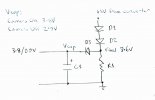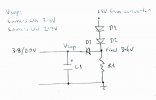After being frustrated with my new G1W-CB forgetting its settings every couple of days, I came up with a mod to keep the capacitor fully charged at all times. Only 3 diodes and a resistor need to be put inside the camera and two wires go from the camera to a 12V to 5V converter that is connected to an "always on" 12V supply in your fuse panel with an "Add-a-Fuse" connector.
If you are handy with a soldering iron (or know someone who is) and willing to do a bit of fiddling inside your camera, then this simple mod will ensure your settings are never lost again, even if the capacitor is on its last legs.
I have created a PDF file on how to do it here. The circuit diagram is simple as you can see:
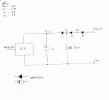
As explained in detail in the PDF file, it is based on the 0.7V drop across forward biased diodes.
The 360 ohm resistor draws a constant 10mA current to provide 3.6V to the anode of D3. The voltage across the camera's capacitor is 3.8V when it is on, reverse biasing D3 and disabling the mod. When the camera is off, the capacitor's voltage falls to 2.9V, forward biasing D3 and allowing it to charge from the converter via D2 and D1.
The 12V to 5V converter I used is freely available on eBay and shuts down automatically if your car battery drops below 11.6V, not that 10mA will do that for a long time.
The fuse holder is also commonly available on eBay and at auto accessory shops.
I have attached some pictures of how it was done.
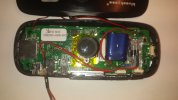
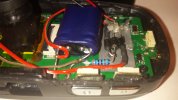
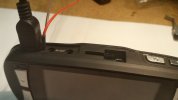
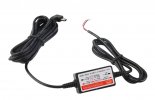
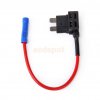
If you have any queries, please ask.
If you are handy with a soldering iron (or know someone who is) and willing to do a bit of fiddling inside your camera, then this simple mod will ensure your settings are never lost again, even if the capacitor is on its last legs.
I have created a PDF file on how to do it here. The circuit diagram is simple as you can see:

As explained in detail in the PDF file, it is based on the 0.7V drop across forward biased diodes.
The 360 ohm resistor draws a constant 10mA current to provide 3.6V to the anode of D3. The voltage across the camera's capacitor is 3.8V when it is on, reverse biasing D3 and disabling the mod. When the camera is off, the capacitor's voltage falls to 2.9V, forward biasing D3 and allowing it to charge from the converter via D2 and D1.
The 12V to 5V converter I used is freely available on eBay and shuts down automatically if your car battery drops below 11.6V, not that 10mA will do that for a long time.
The fuse holder is also commonly available on eBay and at auto accessory shops.
I have attached some pictures of how it was done.





If you have any queries, please ask.

